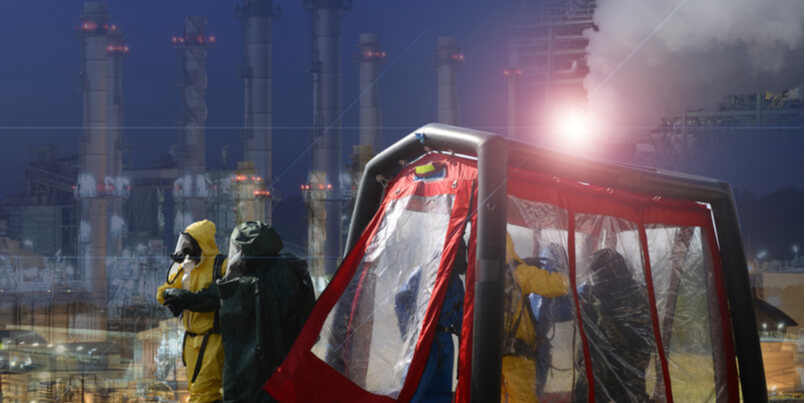 The uncontrolled and unpredictable nature of chemical, biological, radiological and nuclear (CBRN) incidents can place a substantial strain on the psychological and physical health of those tasked with emergency first response.
The uncontrolled and unpredictable nature of chemical, biological, radiological and nuclear (CBRN) incidents can place a substantial strain on the psychological and physical health of those tasked with emergency first response.
While the importance of wellbeing in the workplace is a subject that has gained increasing momentum in the UK in response to rising mental health issues within the wider labour market, it is only recently that the mental health needs of first responders have started to receive more attention.
When the cumulative effects of exposure to dangerous, life-threatening or traumatic situations are taken into consideration, it is little wonder that there have been increased incidences of anxiety and depression among emergency personnel in recent years.
A rise in the prevalence of mental health problems and symptoms of post-traumatic stress disorder (PTSD) among responders has prompted numerous studies which explore the root of the problem and that question what can be done to ensure that emergency workers stay mentally, emotionally and physically safe.
Recent quantitative studies of ambulance personnel, have revealed substantially higher rates of mental distress, mental illness and the associated effects of psychological injury when compared with the general population.
A review of 27 international studies, representing a total of 30,878 ambulance personnel, revealed that the prevalence of post traumatic stress among responders was estimated at 11% - with rates of anxiety and depression both estimated at 15% respectively.
In a broader Canadian study of emergency response workers (which included paramedics, firefighters, police officers and correctional staff) 44.5% of respondents were found to have screened positive for "clinically significant symptoms of one or more diagnosable mental disorders," a figure that is approximately four times higher than the general population.
The psychosocial effects of CBRN response
In addressing the myriad challenges of disaster response, incidents that involve the accidental release or deliberate use of CBRN materials can present their own unique challenges for emergency personnel.
Following the Novichok nerve agent attack in Salisbury UK in 2018 for example, it was reported that 90 Wiltshire police officers and staff had sought some form of psychological support after the incident.
Many reported symptoms of disorientation and anxiety, while others expressed concerns about the possible long-term health effects of exposure to the toxin.
Several months after the attack, Wiltshire's own Chief Constable Kier Pritchard revealed that he and other police personnel were among those receiving ongoing support via the Trauma Risk Management (TRiM) peer support system.
In November 2020 the World Health Organisation (WHO) released new guidance on the integration of mental health in radiological and nuclear emergency response preparedness.
'A Framework for Mental Health and Psychosocial Support in Radiological and Nuclear Emergencies' builds on lessons learned from past radiological and nuclear accidents such as Chernobyl in 1986 and Fukushima in 2011 and argues that the mental health consequences of these types of events can often "outweigh the direct physical health impacts of radiation exposure."
A 2018 study from the US Substance Abuse and Mental Health Services Administration (SAMHSA) estimated that approximately 30% of first responders are likely to develop behavioural health conditions (anxiety, depression, PTSD etc) as a result of their work - in comparison to approximately 20% among the general population.
Among the recommendations outlined in the SAMHSA report was the importance of establishing a work environment that ensures the resiliency and health of first responders, that protects them from overwork and excessive stress, that provide adequate training and that supports them in seeking help when needed.
Building confidence through training and support
The day-to-day demands of those working within the first responder community can place tremendous demands on their mental health and wellbeing.
What is vital is to ensure that first responders are adequately trained and supported - and that they are provided with the opportunity to put their knowledge and skills to the test through the conducting of safe and realistic training exercises.
Preparedness and confidence in CBRN emergency response can be significantly enhanced by the provision of training scenarios that replicate both the physical and psychological challenges of real-life incidents.
If you would like to learn more about the range of simulator training systems that Argon Electronics currently provides to those providing realistic CBRN instruction within the first response community then please feel free to get in a touch.
You can also register by clicking on the link below to join one of our bi-weekly webinars where we provide live demonstrations of our simulator detector products.





